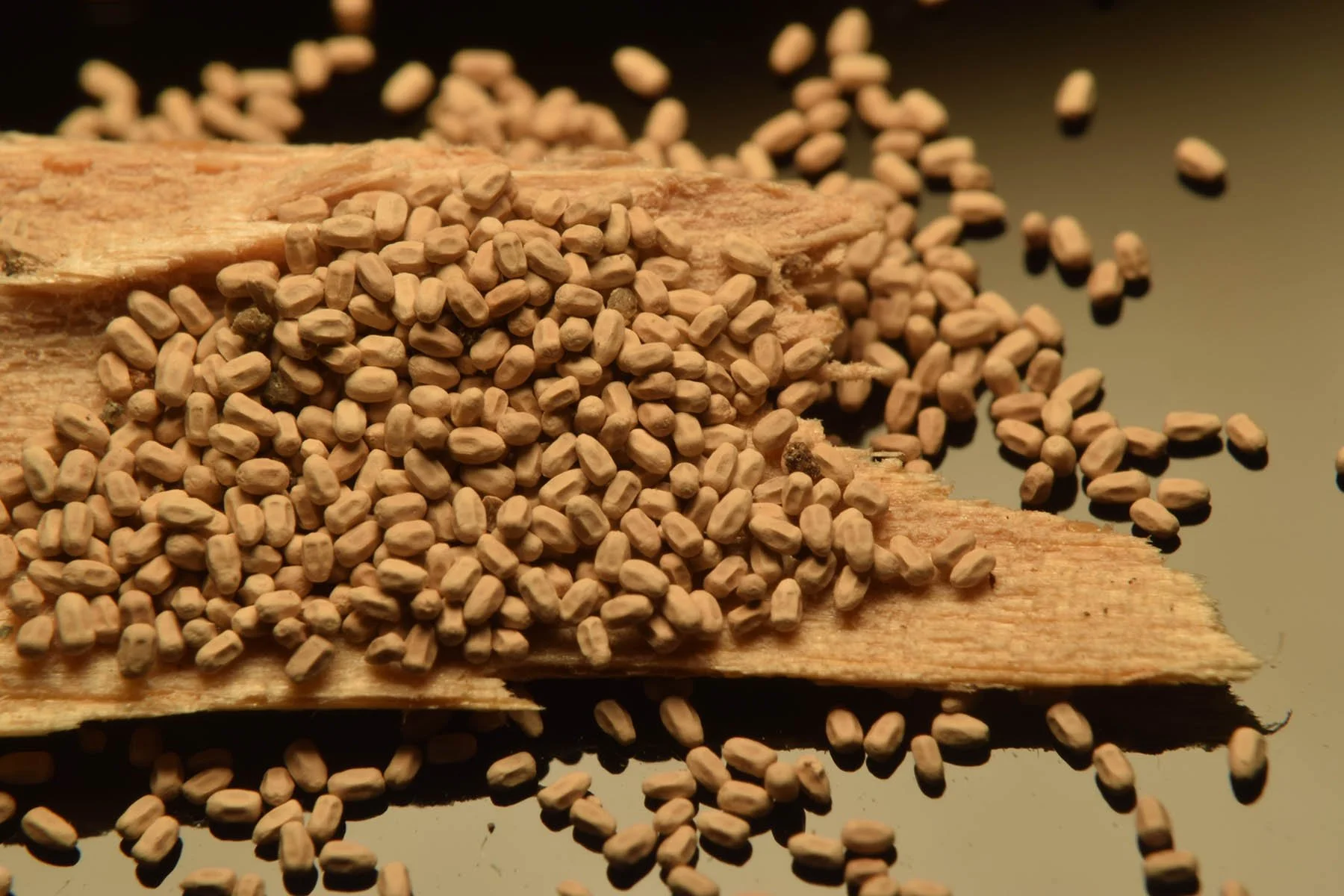Drywood Termites
Drywood termites are a significant concern for homeowners in Southern California, as they thrive in the region's warm and dry climate. Unlike Subterranean termites, which require contact with moist soil to survive, Drywood termites do not need soil contact and instead infest dry wood. This makes them especially problematic in wooden structures such as homes, furniture, and other wooden fixtures.
Drywood termites are prevalent in Southern California due to the availability of ideal food sources and the favorable weather conditions. While they don’t need moisture to survive, they still cause extensive damage to wood by feeding on it, leading to structural compromise over time. Their presence can go unnoticed for months, as they typically infest hidden areas such as wall voids, attics, and subfloors, making early detection challenging.



Challenges of Drywood Termite Control:
Preventing Drywood termite infestations in wooden structures is incredibly challenging due to their ability to infiltrate the interior wood without requiring soil contact. This makes traditional prevention methods, such as barrier treatments, less effective against them.
Treatment Options for Drywood Termites:
Once Drywood termites have infested your home, there are several treatment options available, but the success of treatment often depends on how early the infestation is detected:
How Drywood Termites Operate:
Drywood termites are a serious threat to wooden structures, often going unnoticed until significant damage has occurred. Unlike their subterranean cousins, these pests live entirely within the wood they infest, making early detection challenging. Below is a breakdown of how Drywood termites operate, including signs of infestation and the damage they can cause to your home.
-
Colonies: Drywood termite colonies are usually smaller than those of Subterranean termites, but they can still cause significant damage. Once they infest your home, Drywood termites will remain inside wooden structures, such as beams, support posts, and attic wood, feeding on the cellulose.
Swarming: Drywood termites are known for their swarming behavior, where winged reproductive termites leave their colonies to mate and establish new colonies. This typically happens during warm months, often in the late summer or fall. Swarming is a clear sign of a Drywood termite infestation, and it can occur both indoors and outdoors.
Frass: One of the telltale signs of a Drywood termite infestation is frass (fecal pellets), which are small, oval, and have a rough texture. These pellets are expelled from the termites' feeding tunnels and typically accumulate below the infested wood. Finding frass near wood is a clear indication of termite activity.
Damage: Drywood termites cause damage as they tunnel through wood, leaving behind visible holes or galleries. Over time, the infested wood weakens, potentially compromising the structure of your home. This can be especially concerning for areas like wall framing, structural beams, and support columns.
Inspection and Early Detection:
The best method of combating Drywood termites is through early detection. Since they are difficult to spot, a professional termite inspection is critical for identifying the signs of an infestation before extensive damage occurs. X Pest Defense, recommends yearly termite inspections for homeowners, particularly in areas prone to Drywood termite activity.
-
Localized Spot Treatments: If the infestation is caught early and is limited to a specific area, a spot treatment may be effective. This involves targeting the affected wood with a liquid termiticides. Spot treatments are more cost-effective than whole-structure fumigation but are only suitable for smaller infestations.
Whole Structure Fumigation: For widespread infestations, fumigation is the most effective and reliable method for full eradication. Fumigation involves enclosing the entire structure and filling it with a gas that penetrates wood and eliminates all termites, including those hidden deep within wooden structures. This treatment is more expensive and requires the homeowners to vacate the property for a short period, but it ensures the complete elimination of the termites. It also includes a 3-Year Treatment Warranty.


